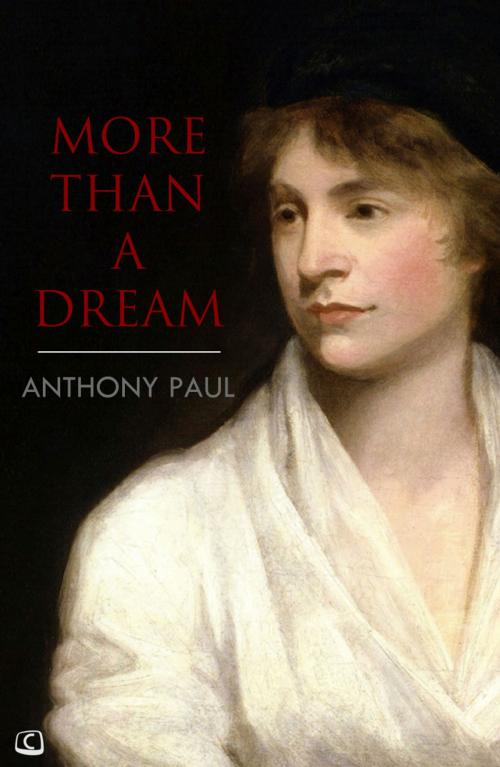| Author: | Anthony Paul | ISBN: | 9781909139565 |
| Publisher: | Create Digital Publishing | Publication: | December 21, 2012 |
| Imprint: | Language: | English |
| Author: | Anthony Paul |
| ISBN: | 9781909139565 |
| Publisher: | Create Digital Publishing |
| Publication: | December 21, 2012 |
| Imprint: | |
| Language: | English |
This novel is built around the life-story of the pioneer feminist Mary Wollstonecraft, told by MW herself, to Adam Hughes, a writer and academic whose own life is at a crisis. To his surprise he finds himself in contact with the long-dead Mary, becomes intensely involved with her and in due course also with her lover Gilbert Imlay. Their three voices are interwoven. It gradually becomes clear why Adam needs to tell this story, and how it relates to him particularly. From Marys own double perspective of then and now, and with comments and reactions from Adam, we follow her fortunes from girlhood on, and see how her destiny is shaped by her experience. Her life is eventful: having to make her own way in the world when her father squanders the family fortune, she is employed as a ladys companion, runs a school with her younger sisters, works as a governess in a grand aristocratic household. She nurses her dying mother, rescues her younger sister from her brutal husband, forms radical social opinions. She experiences an inspired vision of a fundamental flaw at the heart of all human society, writes her great book on the Rights of Woman, is involved in the passionate political debate of her time, the late 18th century. Marys search for love is a central theme. Her first love is Fanny Blood, who dies of TB, her second the artist Henry Fuseli, who is cold-hearted besides being already married. She goes to Paris to join the Revolution. At this extraordinary historical moment of ecstatic hope and extreme danger she meets her great love and her fate in the person of a handsome American, Gilbert Imlay. Mary finds her sexual fulfillment with Gilbert. But not long after the birth of their daughter, he deserts her. Nobody is surprised at this except Mary, who refuses to accept that she could have been mistaken in him and in the essential rightness of their love. In telling her own story she struggles to make sense of this central drama. Gilbert gradually discloses the troubled depths below his confident air of being an ordinary sort of fellow, the tangled coil of fear, aggression and guilt that makes him run away from love and happiness. Finally each of the three journeys reaches its conclusion, the suspense being sustained right up to the end. Mary finally sees how although she and Gilbert were made for each other they were also bound to fail as a couple; Gilbert is released from the power of his inner demons, and from the belief that he is a damned soul; Adam understands why his own marriage failed and can now internalize the voices of his long-dead visitors and get back to the business of living his own life.
This novel is built around the life-story of the pioneer feminist Mary Wollstonecraft, told by MW herself, to Adam Hughes, a writer and academic whose own life is at a crisis. To his surprise he finds himself in contact with the long-dead Mary, becomes intensely involved with her and in due course also with her lover Gilbert Imlay. Their three voices are interwoven. It gradually becomes clear why Adam needs to tell this story, and how it relates to him particularly. From Marys own double perspective of then and now, and with comments and reactions from Adam, we follow her fortunes from girlhood on, and see how her destiny is shaped by her experience. Her life is eventful: having to make her own way in the world when her father squanders the family fortune, she is employed as a ladys companion, runs a school with her younger sisters, works as a governess in a grand aristocratic household. She nurses her dying mother, rescues her younger sister from her brutal husband, forms radical social opinions. She experiences an inspired vision of a fundamental flaw at the heart of all human society, writes her great book on the Rights of Woman, is involved in the passionate political debate of her time, the late 18th century. Marys search for love is a central theme. Her first love is Fanny Blood, who dies of TB, her second the artist Henry Fuseli, who is cold-hearted besides being already married. She goes to Paris to join the Revolution. At this extraordinary historical moment of ecstatic hope and extreme danger she meets her great love and her fate in the person of a handsome American, Gilbert Imlay. Mary finds her sexual fulfillment with Gilbert. But not long after the birth of their daughter, he deserts her. Nobody is surprised at this except Mary, who refuses to accept that she could have been mistaken in him and in the essential rightness of their love. In telling her own story she struggles to make sense of this central drama. Gilbert gradually discloses the troubled depths below his confident air of being an ordinary sort of fellow, the tangled coil of fear, aggression and guilt that makes him run away from love and happiness. Finally each of the three journeys reaches its conclusion, the suspense being sustained right up to the end. Mary finally sees how although she and Gilbert were made for each other they were also bound to fail as a couple; Gilbert is released from the power of his inner demons, and from the belief that he is a damned soul; Adam understands why his own marriage failed and can now internalize the voices of his long-dead visitors and get back to the business of living his own life.















